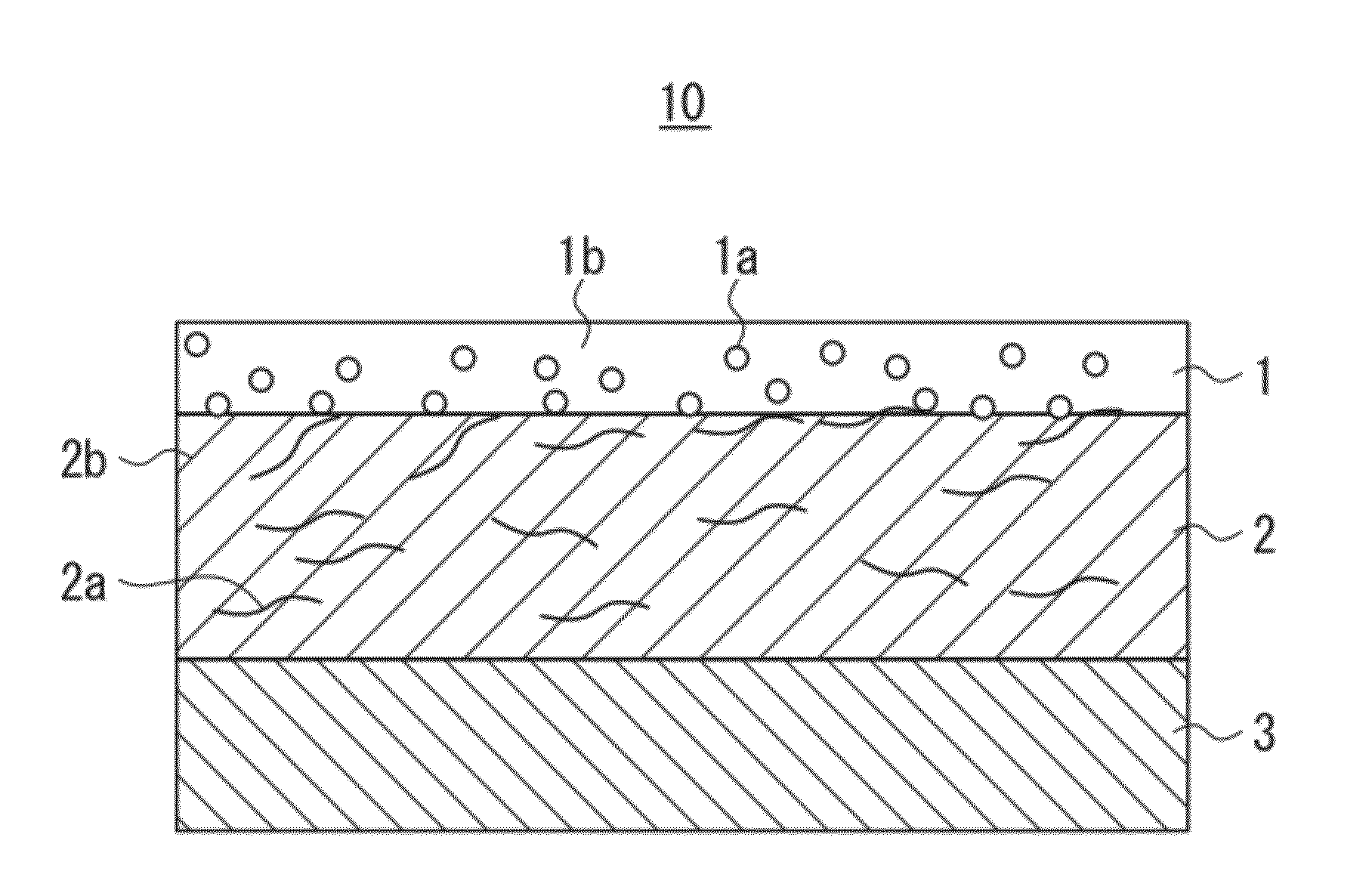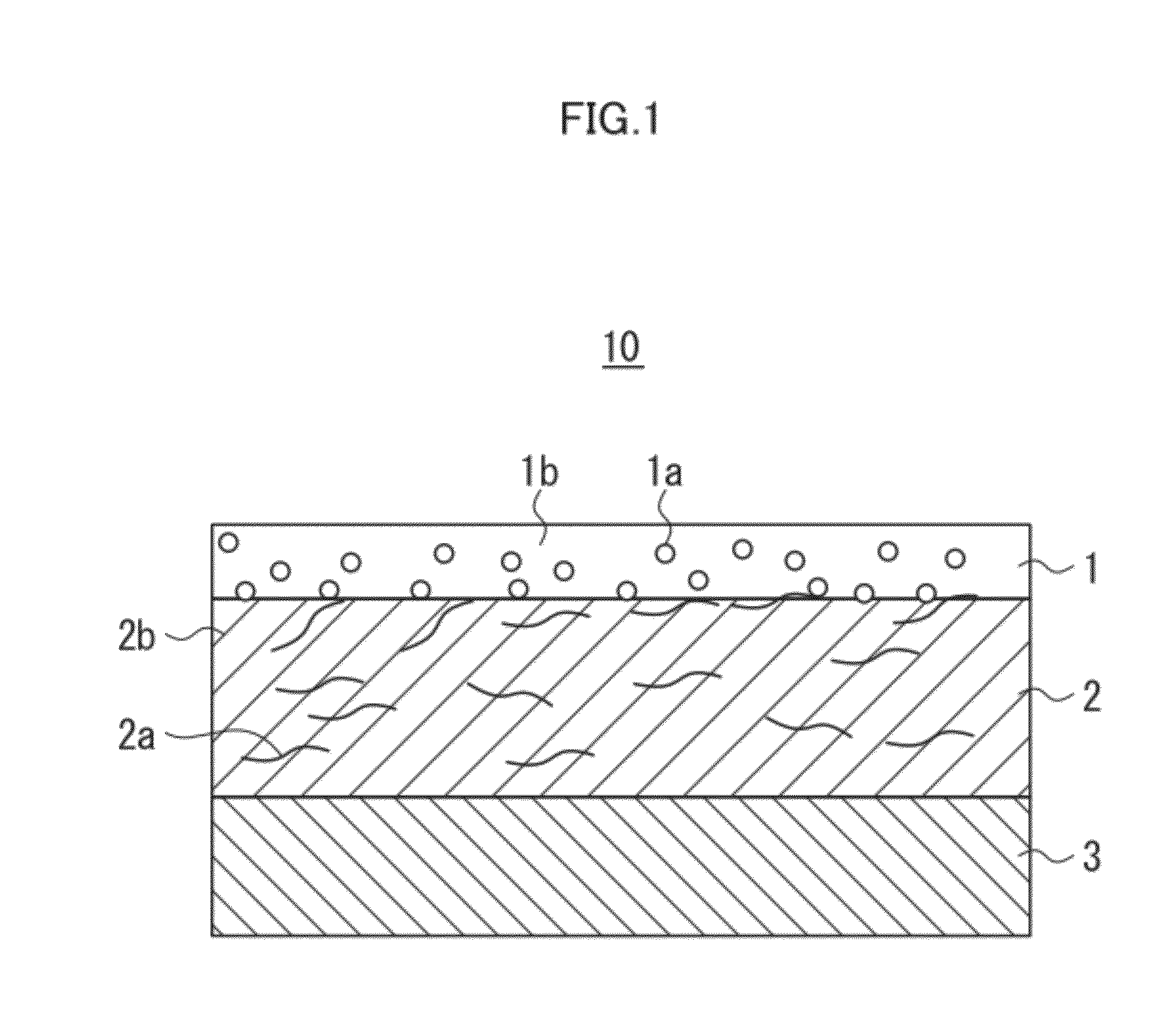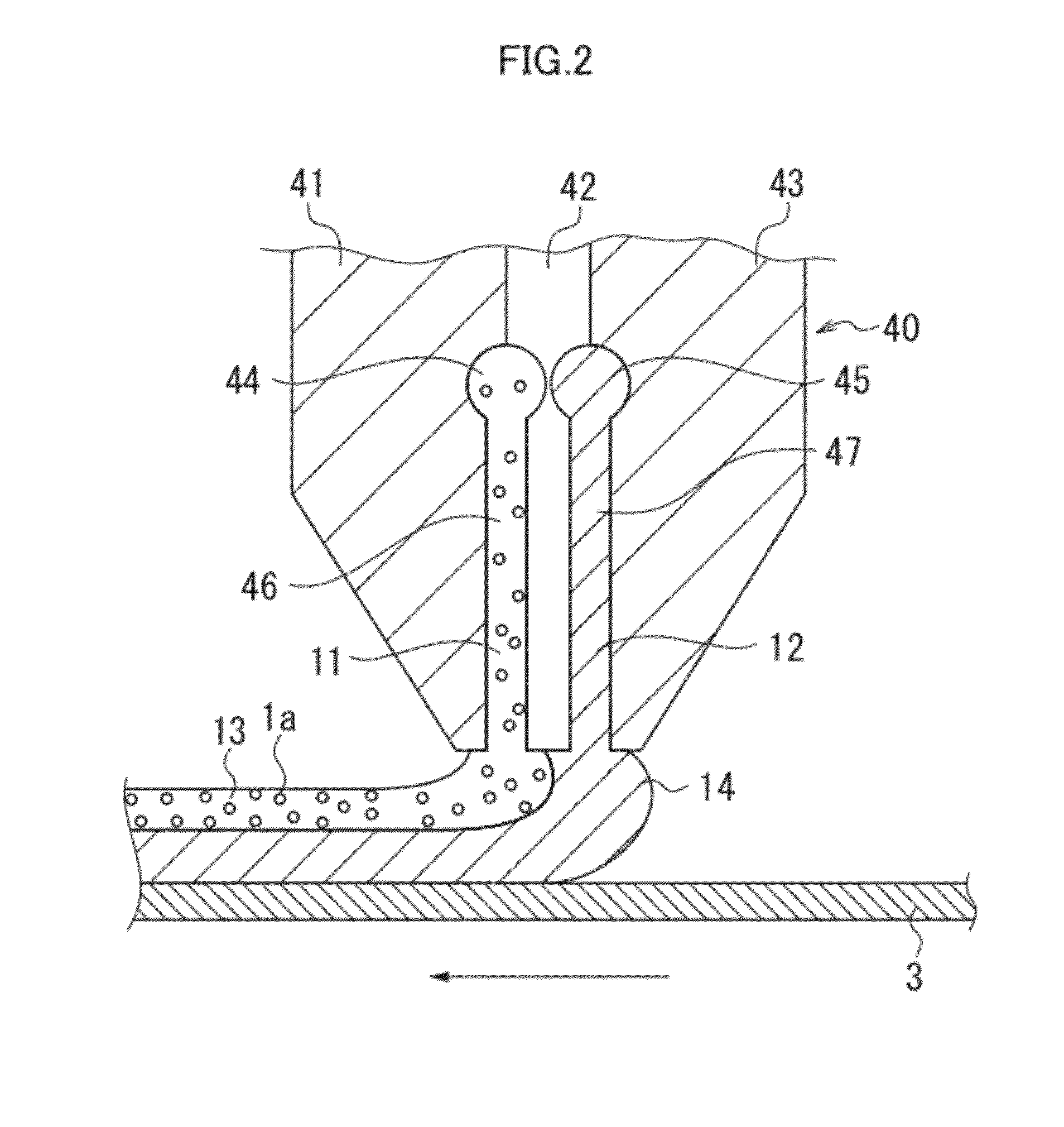Method for producing laminate film
a technology of laminate film and film layer, which is applied in the direction of coating, instruments, pretreatment surfaces, etc., can solve the problems of disadvantageous mixing of adjacent coating fluids with each other, point-defect failure, and disadvantageous mixing of upper and lower layers
- Summary
- Abstract
- Description
- Claims
- Application Information
AI Technical Summary
Benefits of technology
Problems solved by technology
Method used
Image
Examples
examples
[0122]The present invention is described in more detail below with reference to examples and comparative examples of the present invention. However, these are not meant to be restrictive.
[0123]
[0124]Cellulose triacetate film (TAC-TD80U, manufactured by FUJIFILM Corporation, a thickness of 80 μm)<
[0125]Preparation of First Coating Fluid>
[0126]A fluid prepared by using the following method was used as a first coating fluid (a coating fluid 1).
[0127]To 500 parts of hollow silica-particle fine particle sol (isopropyl alcohol silica sol, CS60-IPA manufactured by Catalysts & Chemicals Industries Co., Ltd., an average particle diameter of 60 nm, a shell thickness of 10 nm, a silica concentration of 20%, and a refractive index of silica particles of 1.31), 20 parts of acryloyloxypropyltrimethoxysilane and 1.5 parts of isopropoxyaluminumethylacetate were added and mixed, and then 9 parts of ion-exchanged water was added. After reaction at 60° C. for eight hours, cooling was performed to ambi...
PUM
| Property | Measurement | Unit |
|---|---|---|
| particle diameter | aaaaa | aaaaa |
| particle diameter | aaaaa | aaaaa |
| thickness | aaaaa | aaaaa |
Abstract
Description
Claims
Application Information
 Login to View More
Login to View More - R&D
- Intellectual Property
- Life Sciences
- Materials
- Tech Scout
- Unparalleled Data Quality
- Higher Quality Content
- 60% Fewer Hallucinations
Browse by: Latest US Patents, China's latest patents, Technical Efficacy Thesaurus, Application Domain, Technology Topic, Popular Technical Reports.
© 2025 PatSnap. All rights reserved.Legal|Privacy policy|Modern Slavery Act Transparency Statement|Sitemap|About US| Contact US: help@patsnap.com



